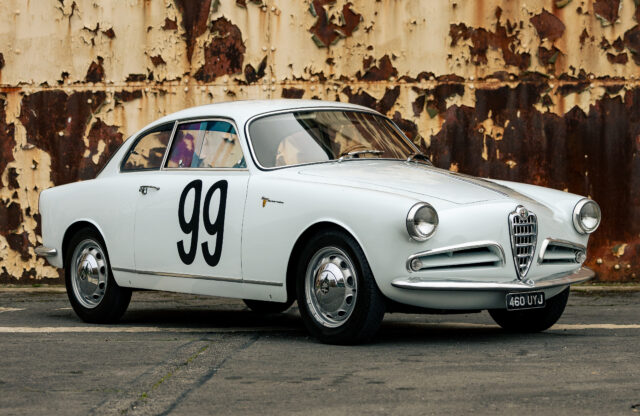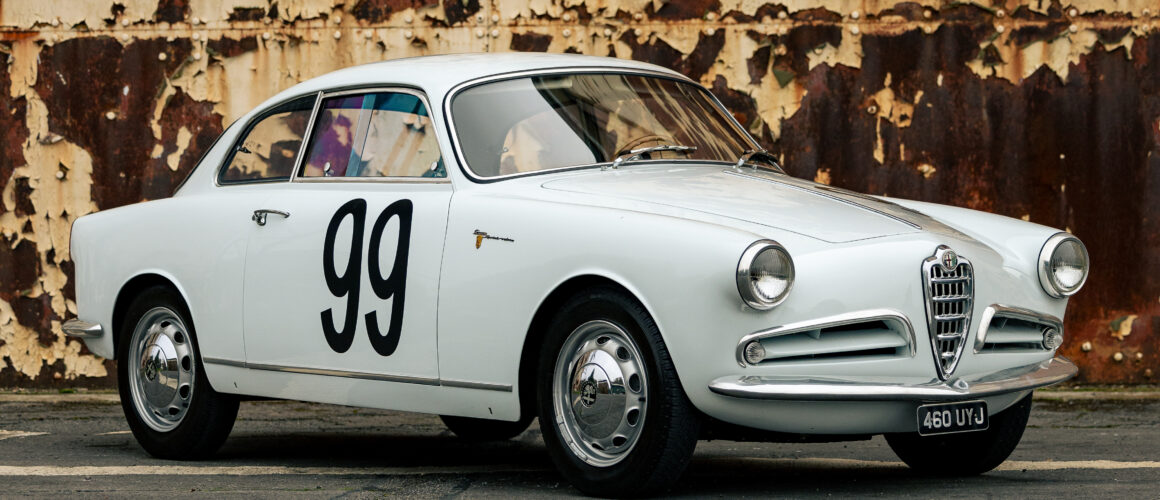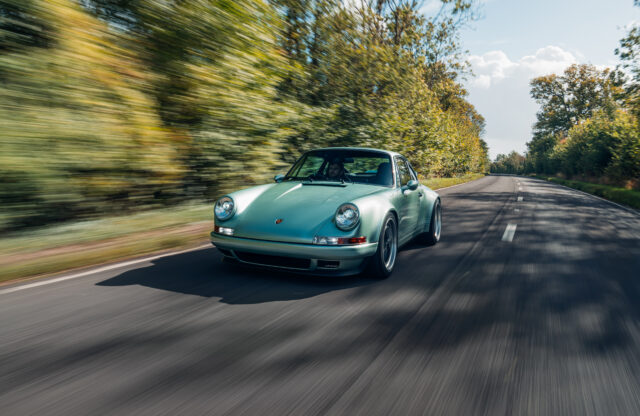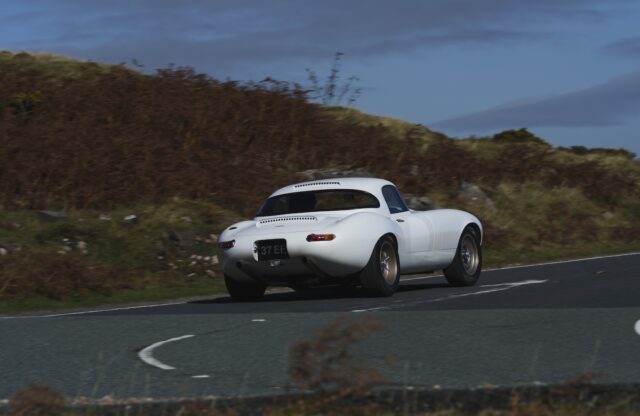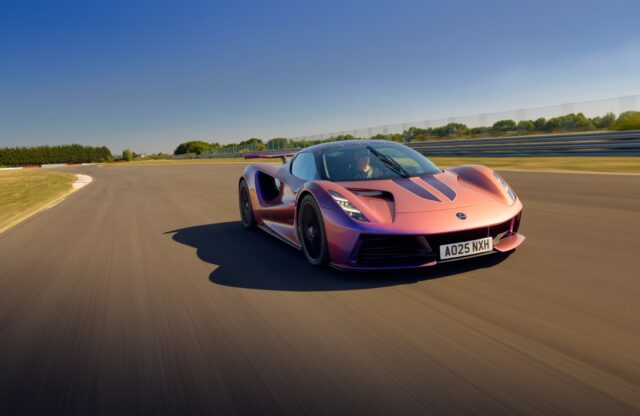From nimble underdogs such as the Renault Twingo RS to powerhouses such as the Mercedes-Benz AMG A45, small cars with big performance have long captivated enthusiasts by making speed practical. The formula is beautifully simple: take an everyday car, add racing DNA, subtract weight – and you get a machine that drives like more than the sum of its parts. This philosophy is nothing new, with an early example being the Alfa Romeo Giulietta Sprint Veloce ‘Alleggerita.’
The regular Giulietta Sprint debuted at the 1954 Turin Motor Show as a striking 2+2 coupé, showcasing exquisite Bertone bodywork and an innovative 1.3-litre Alfa Romeo Twin Cam engine. Sending 60bhp to the rear wheels through a four-speed manual transmission and featuring a monocoque chassis with independent front suspension, the Giulietta was a fabulous car to drive. Unsurprisingly, it quickly attracted the attention of Italian privateers and hillclimbers, making its mark in European racing events, including the 1955 Mille Miglia.
Despite its fantastic handling, the Mille Miglia exposed the car’s Achilles’ heel: a poor power-to-weight ratio. Weighing in at 895kg, the 60bhp engine rendered it uncompetitive against more powerful rivals such as the Porsche 356, Aston Martin DB2/4, and Mercedes-Benz 300 SL in the Gran Turismo oltre 1300 class. The solution was clear: increase power and reduce weight.
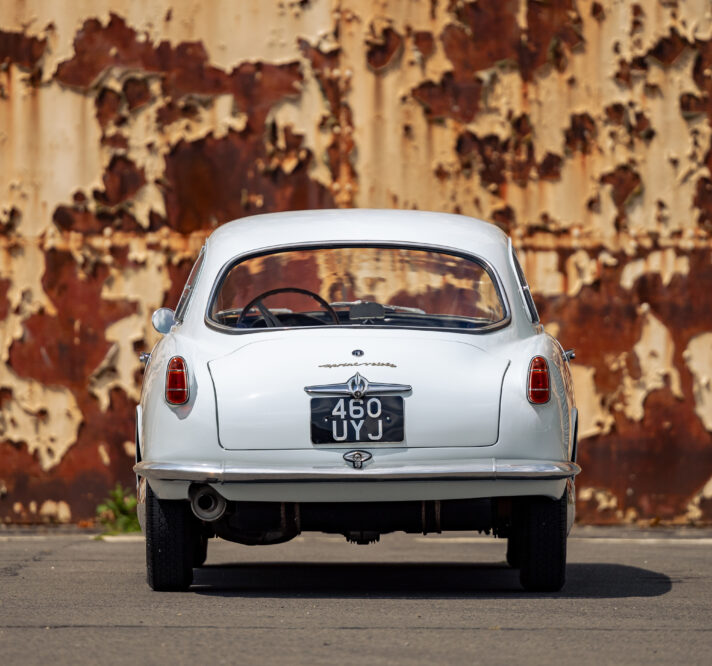
The model dominated the 1956 Mille Miglia's class standings, with Maserati Formula 1 driver Jo Bonnier leading a sweep of the top six positions

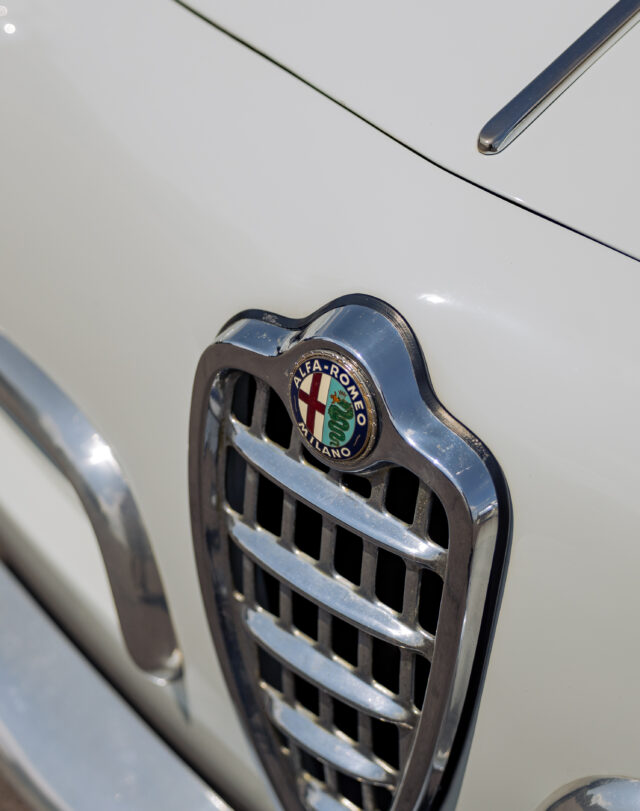
In response, Alfa Romeo introduced the Sprint Veloce in 1956, benefitting from lightweight aluminium components and a simplified interior. The engine was upgraded with a higher compression ratio, aggressive camshaft profiles, lighter pistons, larger valves and twin Weber 40DCO3 carburettors, boosting power output to around 90bhp. These enhancements significantly improved the model’s appeal in the European racing scene and paved the way for the introduction of the Alleggerita.
This special version was effectively purpose-built for competition, focusing on maximising performance by minimising weight and optimising handling. You could even argue that the Alleggerita was a precursor to the modern conception of a homologation special.
Designed to be as light as possible, the Alleggerita featured aluminium doors, bumpers, bonnet and bootlid, along with Plexiglass side and rear windows, while standard Sprint Veloces made do with conventional steel and glass items. The interior was stripped of as many non-essential features as possible, including glovebox soundproofing, sun visors and various trim pieces. Even the seats were manufactured with less internal foam to keep the weight down. The result was a weight saving of around 100kg, bringing the total to just 780kg.
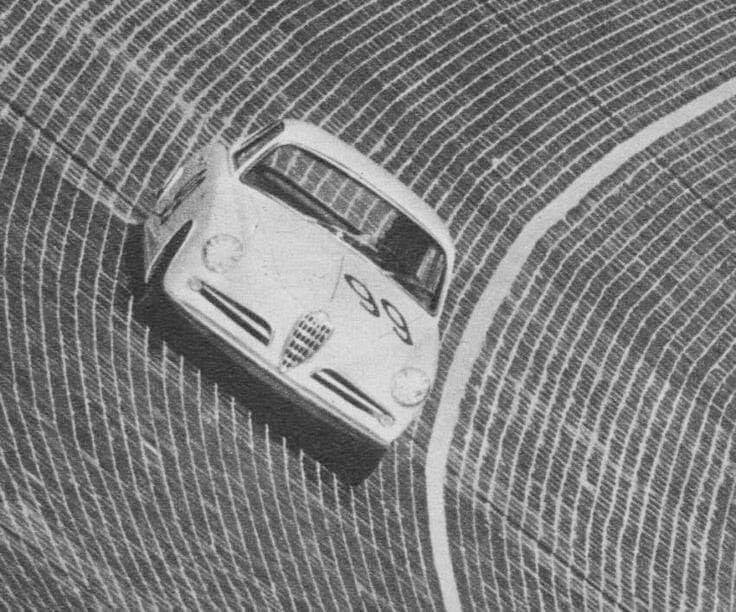
The model dominated the 1956 Mille Miglia’s class standings, with Maserati Formula 1 driver Jo Bonnier leading a sweep of the top six positions and finishing 15th overall – a remarkable achievement. Only around 600 of these incredible cars were produced between 1956 and 1957, and, thanks to the rigours of racing and their vulnerability to rust, the majority have been lost to time.
Jo Bonnier’s journey into Formula 1 is intertwined with Alfa Romeo. His family was the Swedish importer of Alfa Romeo, and consequently he spent a significant portion of his early racing career cutting his teeth from the diving seat of Sprint Veloces. Several months after Bonnier’s triumph in the Mille Miglia alongside Bo Beesen, Alfa Romeo gifted him a new Sprint Veloce Alleggerita, which he then drove to victory in the Berlin Grand Prix at the fearsome AVUS circuit in August 1956. This particular car, chassis number AR 1943/E 02508, was one of the lucky survivors.
Miraculously, this very car is parked mere metres in front of me, dwarfed by one of the imposing World War Two aircraft hangars located within the leafy grounds of Bicester Heritage in Oxfordshire UK. Even more incredibly, I’m clutching the simple key in my right hand, and have been told that I can take this piece of motor sport history for a drive.

But before that, it’s time to explain exactly why such a car finds itself in the heart of Oxfordshire, its revvy Twin Cam sitting at an enthusiastic idle when, typically, it would be tucked away in a discerning collector’s climate-controlled garage or positioned on a museum plinth with lights gleaming on its voluptuous Bertone curves.
Bonnier continued his impressive ascension up the motor sport ladder towards Formula 1 and sports car racing, but tragically the talented Swede lost his life at the Le Mans 24 Hours in 1972, after his Lola T280 collided with traffic on the stretch of Tarmac between the Mulsanne Straight and Indianapolis.
Bonnier’s Alleggerita reportedly continued racing in Sweden with Olle Rehnvall through the 1960s, before disappearing for 40 years. In 2012, it re-emerged and was subjected to a two-year restoration before being acquired by Le Mans veteran, Alfa Romeo enthusiast and motoring journalist Alain de Cadenet.
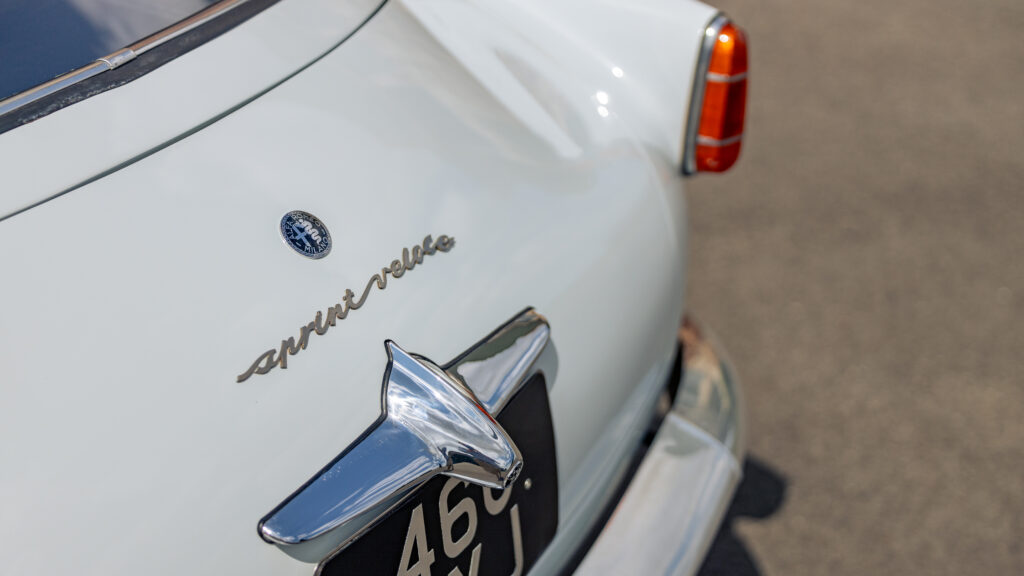
Sadly de Cadenet succumbed to cancer in 2022, being laid to rest alongside the British pre-war racing driver Richard Seaman. Now the Alfa Romeo is set to begin a new chapter of its life, because de Cadenet’s family has decided to consign the car with Broad Arrow Private Sales.
The context of the Alleggerita’s history makes getting behind its elegant three-spoke steering wheel even more special. But first you can’t help but pause and drink in that gorgeous Bertone bodywork from every angle. From a distance, the classic Italian styling seems deceptively clean and simple – a symphony of soft-radius curves and pleasing chrome details.
Yet, on closer inspection, you begin to spot so many thoughtful and elegant design touches that are absent on modern machinery. Examples include the chrome rear boot handle and number-plate light that resembles a tiny aeroplane, the jet-engine-inspired tail-lights and the chrome flourishes that flick outwards beneath the Alfa’s iconic triangular grille. The period-correct Azzurro Nube paintwork follows a similar theme. At first it appears to be a classic white hue, yet, when outside in autumnal sunshine, it reveals a delectable ivory blue tone.
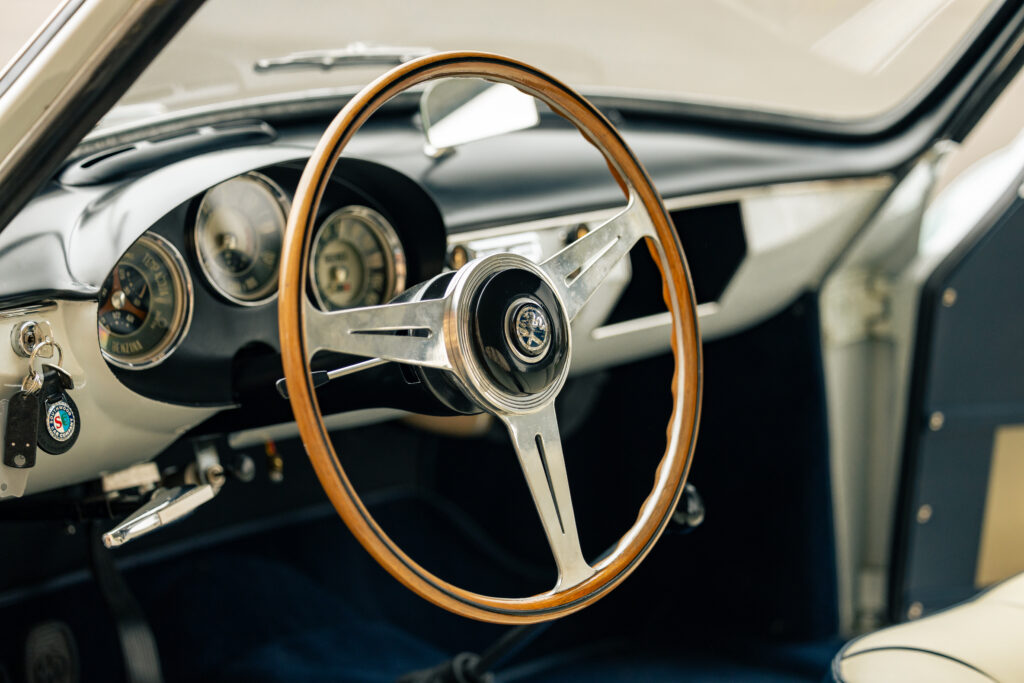
Happily, the Alleggerita is just as captivating to drive as it is to admire. On Bicester’s short test track the thin wood-rimmed steering wheel teems with feedback as the revvy Twin Cam climbs towards its 6900rpm red line. With a 0-60mph time of around 12 seconds it’s by no means fast by modern standards, but it feels keen and has an appetite for revs. Let the revs build and you’ll find the gearshift has a long but tactile throw as you row through each ratio.
The handling and braking also feel of its time. The body roll is noticeable through corners, as are the dive under braking and the squat under acceleration. While these typically aren’t desirable traits for a performance car, the level of communication from the chassis combines with the accessibility of the powertrain to provide a driving experience that is far more engaging than raw statistics would suggest. The car’s lightness also means that the drum brakes provide a surprising amount of stopping power.
While modern cars outperform it on paper, few can match the Alleggerita’s historical significance or pure driving pleasure. Every shift and steering input connects you to Bonnier’s racing legacy, while the responsive Twin Cam and lightweight chassis remind you why these cars dominated their class at the Mille Miglia. It’s a living piece of motor sport history that offers a motoring experience few cars can provide.
For more information, click here.
